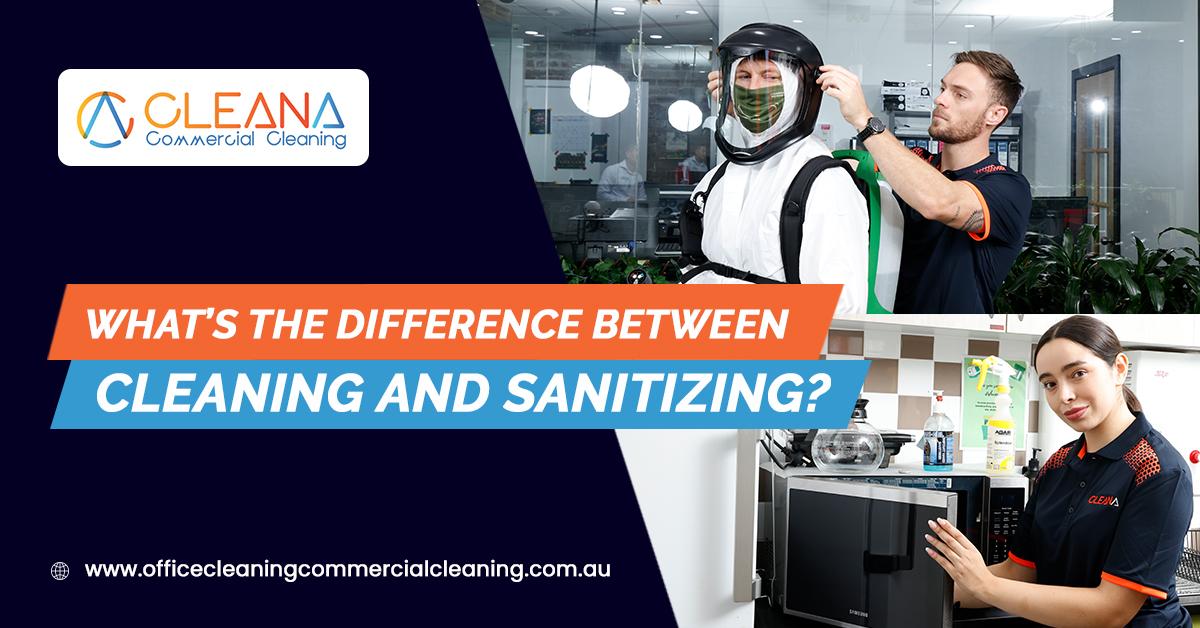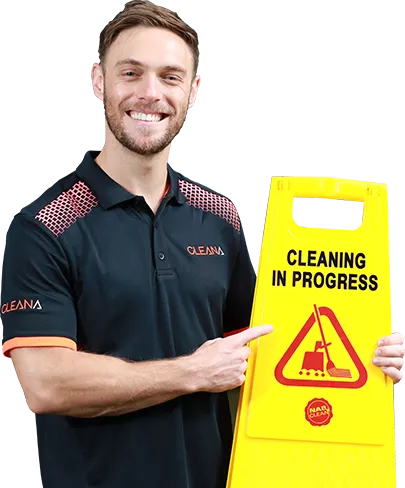When in the market for cleaning products, you may have come across the words “cleaning” and “sanitizing” quite a lot. Not a lot of buyers think about the difference in the words that much, as long as the products that they buy get the job done.
It is, however, important to understand the difference between cleaning and sanitizing especially if you’re looking for Canberra office cleaners so that you can buy the right product. Even though using either cleaning or sanitizing products delivers similar physical results, they’re actually different.
So, what’s the difference between cleaning and sanitizing? If you have always wondered what the main differences are between the two, here is what you ought to know.
Differences In The Process And Aim
Cleaning is a process that aims to get rid of dust, crumbs, dirt, and some disease-causing microorganisms from objects or surfaces. Even though cleaned surfaces or objects look physically spotless and free of germs, they are not always free of germs.
The main catch, however, is that since cleaning removes some of the germs, you are usually at a lower risk of catching any infections that are usually spread by such germs.
Sanitizing, on the other hand, is a process that is aimed towards reducing germs from objects or surfaces by killing them. You might hear the word “disinfecting” being used to refer to sanitizing, but these words are also different.
Disinfecting is a process that is geared towards killing specific disease-causing microorganisms using chemicals. Sanitizing, on the other hand, focuses on reducing germs from surfaces or objects to a safe level, depending on public health standards.
One thing that you ought to keep in mind is that either cleaning, disinfecting, or both can be used to sanitize. If, for example, you want to sanitize a floor, you will have to use a mop, chemicals, and some water.
In the process of sanitizing the floor, you will be cleaning, as well as disinfecting it. On the other hand, sanitizing a TV remote requires only an anti-bacterial wipe, which won’t do the job of cleaning the remote, but it will disinfect it.
If you clean and disinfect an object or surface, you would be lowering the risk of spreading infection more than if you chose to use only one of these processes. It’s good to know that there are some products that are capable of doing both cleaning and disinfecting.
Cleaning
Just like with the process and goals, there are also differences in the products that are used for commercial cleaning and those that are used for sanitizing. They are listed below.
Solvents
Also known by the term “degreasers”, these are alkaline-based cleaning products that have a grease-dissolving agent in them. Solvents are mostly safe to use, but caution has to be taken to prevent prolonged contact with the solvent or inhalation of the fumes.
Detergents
These attribute their cleaning power to substances known as surfactants. These substances work by lowering the tension between a given surface or object and grime.
By reducing the forces that the soiling contaminants used to attach themselves to surfaces or objects, it becomes easier to knock them off, leaving the surfaces or objects clean. A majority of detergents have harmful additives and cannot be used to sanitize.
Acidic Cleaners
These are cleaners that work effectively when it comes to getting rid of mineral deposits, as well as other soiling substances that alkaline cleaners have trouble removing. A major downside of acidic cleaners is that they are harmful to people, pets, and the environment.
Due to their corrosive nature, they can cause a lot of undesirable effects such as burning eyes and skin irritation, so you should think twice about using an acidic cleaner.
Abrasive Cleaners
These cleaners contain either metal particles, mineral particles, nylon particles, or any other materials that would help them attain their abrasive nature.
Such cleaners are mainly used to remove stubborn stains that can be gotten rid of via scrubbing. Some abrasive cleaners contain microbeads.
The main drawback of adding microbeads to abrasive cleaners is that these tiny plastic pieces can make their way through filtration systems, ending up in water bodies.
As you might expect, plastics do not augur well with marine life, which is why different governments have taken the step to ban companies from using microbeads while making abrasive cleaners.
As you can expect, none of the types of cleaners mentioned above is sanitisers. They are all used for commercial cleaning Sydney purposes only, and even though they will help to achieve sparkling clean results, the surfaces are most likely not free of bacteria. That’s where sanitizing comes in.
Sanitizing
As mentioned earlier, sanitisers come in handy when your main aim is to eliminate bacteria and other disease-causing micro-organisms from the surfaces of items.
This can be a complicated one when you take into consideration that the words “sanitize” and “disinfect” are often used to mean the same thing. The reality, however, is that these two words have separate meanings.
The products that are used to disinfect are specially formulated to kill only specific microorganisms. On the other hand, products that are used to sanitize will aim to reduce the growth of a wider range of microorganisms such as viruses, bacteria, and fungi.
As such, sanitizing helps a lot with maintaining a safe environment, as compared to keeping surfaces looking sparkling new. That’s why it’s recommended to sanitize surfaces even after you have cleaned them.
When buying a sanitizing product, always know that the most ideal is the one that targets not just a specific range of micro-organisms, but it should get rid of all disease-causing ones.
In addition to the chemicals that are used to sanitize surfaces or items, other methods, like extreme heat, can also be used. Alternative methods are highly adored, if possible since they don’t pose possible risks such as skin rash, eye irritation, and others, as opposed to chemicals.
At this point, you already know what difference between cleaning and sanitizing apart. Cleaning, being a gentler process that poses fewer risks to the cleaner and other parties, is preferred if health is not a major concern.
If you have little ones or other at-risk-of-infection individuals in your home, on the other hand, sanitizing is the way to go. Whenever you have to sanitize your home, use the recommended instructions and tools to ensure that you not only get the best results but also maximize safety.

